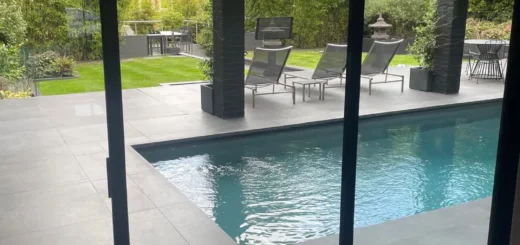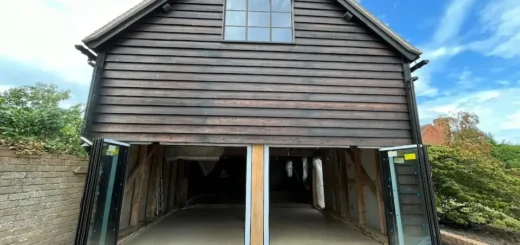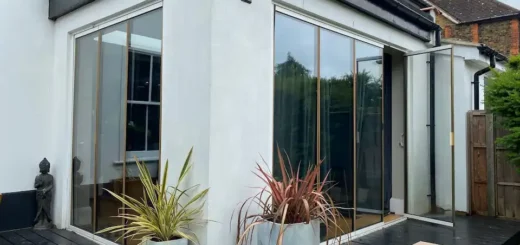Double Glazed Glass Doors Explained
Table of Contents
Double Glazed Glass Door Technology
Modern double glazed glass doors come in many variations, with build quality and materials making a substantial difference to their performance.
The science behind double glazed glass doors involves precise engineering that goes far beyond simply putting two panes together. Glass thickness, cavity spacing, and gas fills work together to create doors that keep homes warm and quiet.
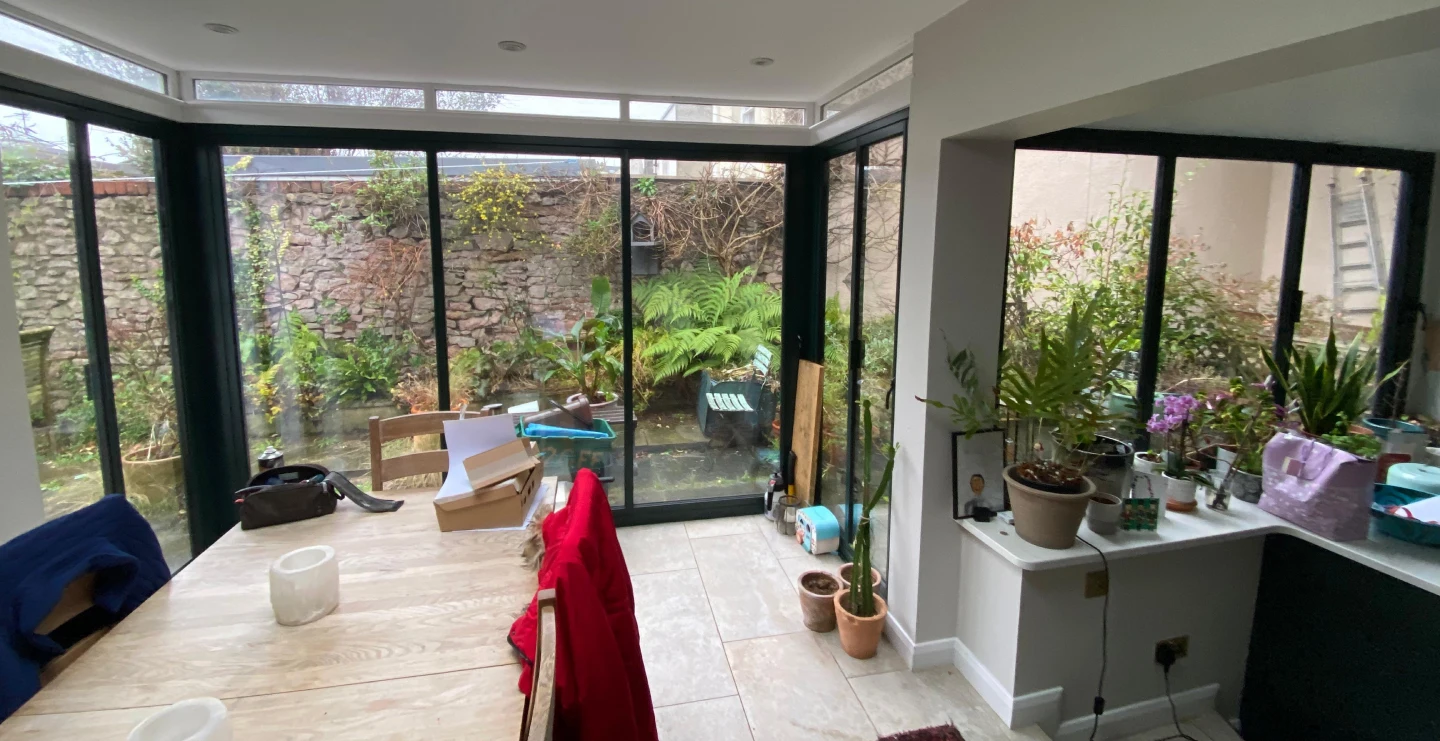
How Double Glazing Works in Glass Doors
Modern glass doors rely on carefully calculated gaps between panes. The space between glass layers in double glazed glass doors typically contains argon gas, which moves more slowly than air and reduces heat transfer between the inside and outside of your home. Professional manufacturers calibrate these gaps down to the millimetre, as incorrect spacing can lead to reduced energy efficiency and potential condensation issues.
A well-made set of double glazed glass doors incorporates multiple barriers against heat loss. Spacer bars, running around the edge of the glass unit, keep the panes at the optimal distance apart while containing special desiccant materials that absorb any moisture trapped during manufacturing. The entire glass unit sits within a frame designed to reduce thermal bridging – the direct transfer of heat through solid materials.
Glass Types and Treatments
Double glazed glass doors must use toughened safety glass to meet British building regulations. Each pane undergoes a heating and rapid cooling process that makes it approximately five times stronger than standard glass. When broken, toughened glass shatters into small, rounded pieces rather than dangerous shards.
Low-emissivity glass, often shortened to ‘low-e’, features an invisible metallic coating that reflects heat back into your home. While invisible to the eye, this microscopically thin layer makes a noticeable difference to energy savings. The best double glazed glass doors combine low-e coatings with gas fills to achieve optimal thermal benefits.
Seals and Thermal Barriers
Weather seals are a big factor in the performance of double glazed glass doors. High-quality rubber or brush seals compress when the door closes, forming a continuous barrier against draughts. The number and positioning of these seals directly influences acoustic performance and heat retention.
Advanced thermal break materials in door frames now outperform traditional options. Polyamide strips, reinforced with glass fibres, create better insulation than older materials while maintaining structural integrity. These innovations allow double glazed glass doors to achieve impressive energy efficiency ratings without compromising on strength or durability.
The integration of multiple sealing points around the frame helps modern doors maintain consistent performance over time. Manufacturers now use compressed foam tapes and flexible gaskets that resist degradation from UV exposure and temperature changes, leading to longer-lasting doors that maintain their insulating properties for years.
Measuring Double Glazed Glass Door Quality
The performance of double glazed glass doors varies widely between manufacturers and models. Quality differences show up in everything from glass specifications to frame construction.
U-Values
U-values measure how well double glazed glass doors prevent heat loss. Lower numbers indicate better thermal insulation – the best double glazed doors achieve u-values below 1.4 W/m²K. Glass composition, spacer materials, and frame design all contribute to these ratings.
Premium double glazed doors with glass panels often incorporate warm-edge spacer bars and high-spec glass coatings to reduce heat transfer. The spacing between glass panes makes a measurable difference too. A precise gap, filled with inert gas, cuts heat loss more effectively than wider or narrower spaces.
Modern home design increasingly demands better insulation standards. While standard exterior doors might meet basic building regulations, top-tier double glazed glass doors can halve heat loss compared to older units. This improved performance stems from advances in glass coating technology and better frame materials.
Sound Insulation Ratings
Noise reduction capabilities depend on several factors beyond just the presence of two glass panes. Glass thickness variations between the inner and outer panes help break up sound waves. Double glazed doors with glass that’s at least 6mm thick typically block more noise than thinner options.
The width of the gap between panes also matters for sound blocking. Wider spaces generally improve noise reduction, though there’s a point where bigger gaps stop adding benefits. The best double glazed glass doors balance these factors while maintaining practical operation.
Advanced Sound Control
Some manufacturers offer acoustic laminated glass in their double glazed doors with glass panels. A special interlayer between laminated sheets absorbs sound vibrations, providing extra quietness without requiring triple glazing. This technology proves particularly useful in homes near busy roads or flight paths.
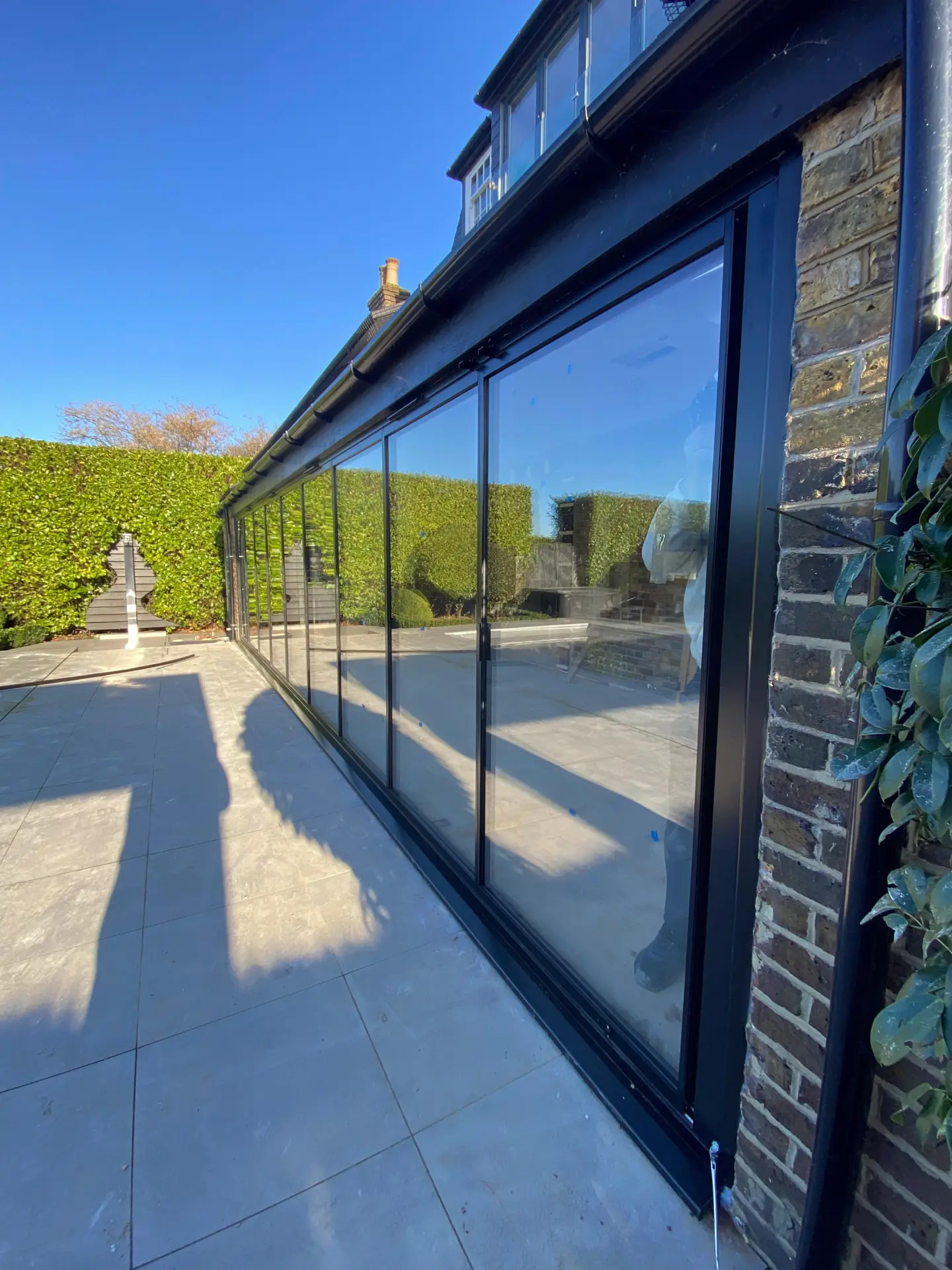
Hardware and Components
Frame materials determine long-term performance and maintenance needs. Aluminium frames in double glazed glass doors resist warping and require minimal upkeep, while timber frames offer natural insulation but need regular treatment. Premium frameless folding glass doors use specialised hardware to maintain proper alignment and seal integrity.
High-quality hinges and running gear ensure smooth operation year after year. Multipoint locking systems compress the seals evenly around the frame, maintaining consistent insulation. Door closers and soft-close mechanisms prevent slamming, which can strain glass units over time.
The best handles and locks use marine-grade stainless steel to resist corrosion. Some manufacturers now offer electronic locking systems integrated into their double glazed glass doors, improving security without compromising thermal performance.
Testing Standards
British Standards Institute (BSI) certification ensures double glazed glass doors meet minimum performance requirements. However, leading manufacturers often exceed these standards. Independent testing measures air permeability, water tightness, and wind resistance under extreme conditions.
Security testing simulates various attack methods to verify door strength. PAS 24 certification indicates that doors resist forced entry attempts. Many insurers now require this standard for exterior doors, especially in new builds or renovations.
Thermal imaging reveals cold spots that might not be visible to the naked eye. These tests help identify potential weaknesses in seals or thermal breaks before they cause problems. Regular testing during production ensures consistent quality across different batches of doors.
Double vs Triple Glazed Glass Doors
Most UK homeowners choose double glazed glass doors over triple glazing, as they provide excellent performance for British weather conditions. The extra cost and weight of triple glazing rarely justifies the marginal gains in insulation.
The Climate
British winters rarely reach the extreme temperatures that make triple glazing necessary. Double glazed glass doors with modern low-e coatings and argon filling perform well in temperatures as low as -5°C. The moderate UK climate means double glazed doors with glass panels maintain stable indoor temperatures throughout most of the year.
Northern European countries often specify triple glazing because their winters regularly drop below -10°C. In Britain, properly fitted external doors with double glazing prevent heat loss effectively. Coastal properties might benefit from triple glazing due to stronger winds, but double glazed glass doors usually suffice inland.
Seasonal Performance
Summer brings different challenges for glazed doors. Triple glazing can trap too much heat, while quality double glazed glass doors allow better temperature regulation. Solar control glass options block excess heat without requiring the extra weight and complexity of a third pane.
Weight and Installation Factors
Triple glazing adds approximately 50% more weight to doors compared to double glazed glass doors. This extra mass requires stronger frames and hinges, often limiting design options. Double glazing strikes a better balance between insulation and practicality, especially for large sliding doors where smooth operation matters.
The increased weight of triple glazing puts more strain on moving parts:
- Roller systems need upgrading to handle heavier panels
- Hinges must be larger and more robust
- Frame reinforcement becomes mandatory
- Installation requires additional structural support
- Opening and closing takes more effort
Most British properties lack the structural provisions for triple glazed exterior doors. Retrofitting triple glazing might require extensive modifications to door openings and supporting walls. Double glazed internal glass doors provide ample insulation for room dividers without these complications.
Cost-Benefit Analysis
Manufacturing triple glazed units costs about 30% more than equivalent double glazed glass doors. The price difference comes from:
Labour costs increase because triple glazed units take longer to manufacture and install. Specialized equipment handles the extra weight, adding to installation expenses. Repairs also cost more due to the complexity of triple glazed systems.
Energy efficient double glazing typically pays for itself through reduced heating bills within 8-12 years. Triple glazing’s payback period often extends beyond 15 years, reducing its appeal for property value improvement. The money saved on triple glazing could instead fund better insulation elsewhere in the home.
Performance Data
Laboratory testing shows triple glazing improves u-values by approximately 0.2-0.3 W/m²K compared to top-quality double glazed glass doors. This small improvement rarely justifies the added expense and complexity. Real-world studies suggest occupants notice little difference in comfort between modern double and triple glazing.
Gas-filled double glazing blocks almost as much noise as triple glazing. The difference becomes noticeable only in extremely noisy environments. Professional acoustic testing reveals that varying pane thicknesses in double glazing often works better for sound reduction than adding a third pane.
When comparing condensation resistance, triple glazing holds a slight advantage. However, modern double glazed doors with glass maintain good surface temperatures, preventing most condensation issues. The key lies in proper installation and maintaining adequate ventilation rather than extra glass layers.
The physical limitations of glass mean triple glazing’s theoretical benefits don’t always translate to real improvements. Double glazed glass doors, installed correctly with quality components, meet or exceed the practical needs of most British homes. The marginal gains from triple glazing rarely warrant its drawbacks in cost and complexity.
Real Performance of Double Glazed Glass Doors
Measuring the actual performance of double glazed glass doors in British homes reveals how well they work in day-to-day conditions. Field testing shows that installation quality often matters more than technical specifications.
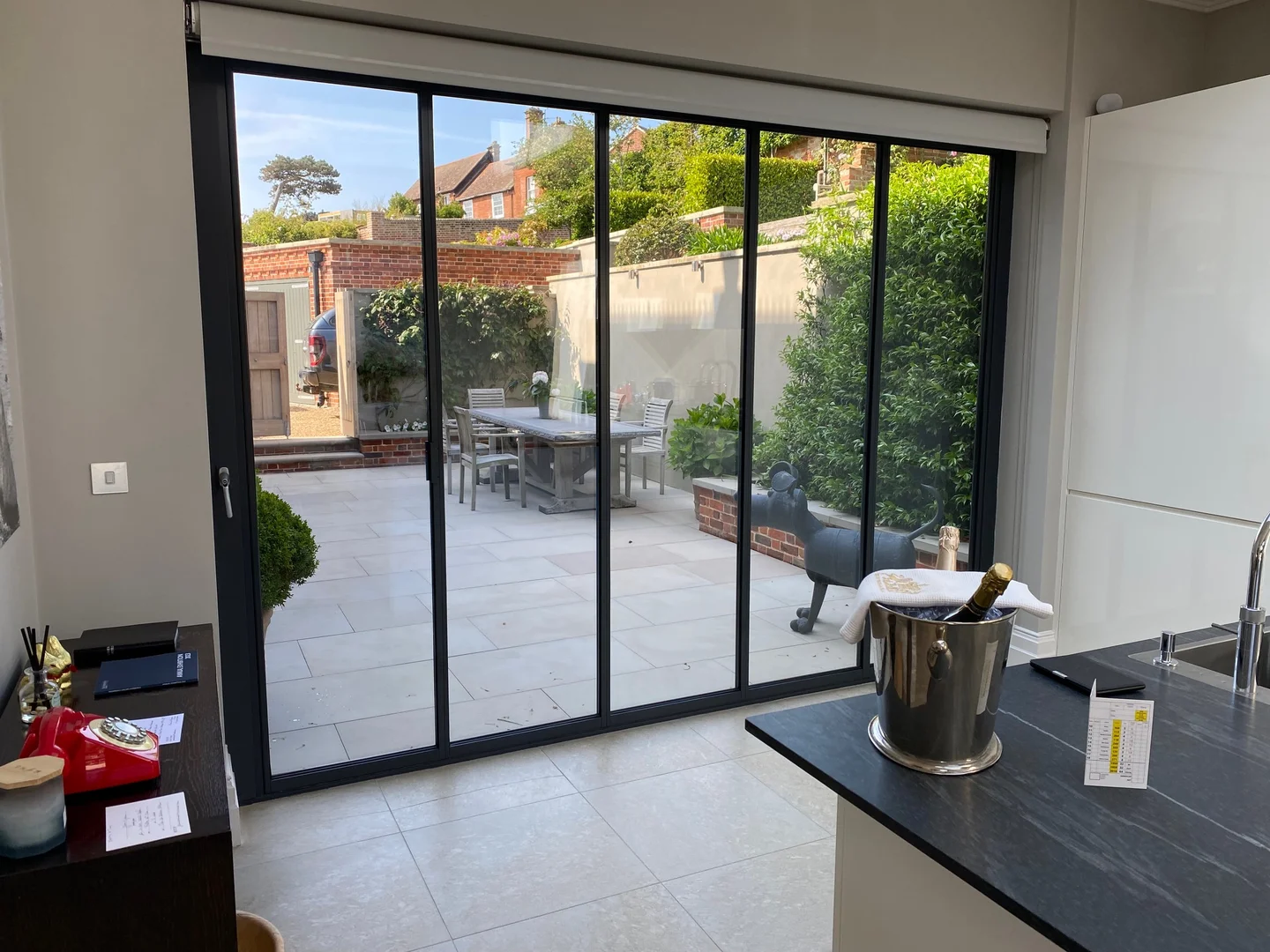
Energy Bill Impact
Gas and electricity bills often drop after installing modern double glazed glass doors. New thermal insulation technology in door frames cuts heat loss through the usual weak points around the edges. Properly fitted double glazed doors with glass prevent draughts that waste heating energy.
Older double glazing technology from the 1990s and early 2000s relied heavily on basic air-filled cavities. Modern double glazed glass doors use advanced gas fills and coatings that provide much better insulation. These improvements show up clearly in household energy usage patterns.
Long-term Savings
Detailed monitoring of homes with different types of glazing reveals that door location and usage patterns shape real energy performance. South-facing double glazed aluminium doors might gain enough solar heat to offset their u-value rating. The same doors on a north wall need better insulation to maintain comfort.
Home heating systems work more efficiently when paired with well-insulated doors. Boilers cycle less frequently because rooms hold their temperature longer. This reduced cycling helps heating systems last longer while using less fuel.
Draught Prevention
Poor fitting causes more problems than poor specifications in double glazed glass doors. Even premium doors leak air if the frames warp or the seals deteriorate. Regular maintenance keeps the moving parts working smoothly and prevents gaps from forming.
The best double glazed doors with glass compress their seals evenly when closed. This compression, combined with multiple sealing points, blocks air movement effectively. Modern seal designs resist taking a permanent set, so they spring back to shape even after years of use.
Condensation Control
Double glazed glass doors resist condensation through several physical mechanisms. The outer pane stays closer to outside temperature while the inner pane matches room temperature. This temperature split prevents moisture from condensing on the room-side glass.
The cavity between glass panes must stay completely sealed to prevent condensation inside the unit. Any moisture that gets past the seals becomes trapped with no way to evaporate. Quality double glazed glass doors use desiccant materials in their spacer bars to absorb any residual moisture sealed in during manufacture.
Ventilation Balance
Fresh air circulation helps prevent condensation without losing too much heat. Modern double glazed glass doors often include trickle vents or similar features that allow controlled ventilation. These small openings let moisture escape while limiting heat loss.
Temperature Stability
Double glazed glass doors help maintain steady indoor temperatures by reducing heat loss and solar gain. Advanced glass coatings reflect heat back into rooms during winter while limiting unwanted solar heating in summer. This balanced performance keeps rooms comfortable year-round.
Winter mornings show how well double glazing works. The inner pane of quality double glazed glass doors stays warm enough to prevent cold spots near the glass. This warmth extends to the surrounding air, creating a comfortable environment right up to the door.
Summer brings different challenges. Double glazed glass doors need to block excessive heat while letting in plenty of light. Special solar control coatings reflect infrared radiation without making the glass look dark or tinted. These coatings work better on double glazing than single panes because they protect the inner glass surface.
Choosing Double Glazed Glass Doors
Glass specification and frame design make a bigger difference to performance than many buyers realise. Poor choices in these areas lead to disappointing results, regardless of price point.
Frame Design Impact
Double glazed glass doors need frames that complement their insulating properties. Aluminium frames conduct heat twenty times faster than uPVC, but thermal breaks reduce this conductivity. The best frames use multiple chambers to trap air, improving their thermal insulation.
Modern double glazed bifold doors often combine materials to balance strength and insulation. Aluminium’s rigidity prevents sagging in wide openings, while polymer inserts cut heat loss through the frame. These hybrid designs allow larger glass panels without compromising u-value ratings.
Structural Integrity
Panel weight determines the required frame strength. Double glazed doors with glass must resist twisting forces that could break their seals. Frame reinforcement adds stability but can create thermal bridges unless properly designed.
The frame depth must accommodate the glass unit thickness plus enough rebate space for drainage and expansion. Deeper frames generally provide better insulation but might look bulky. Premium double glazed frameless glass doors use specialised fixings to limit visible frame areas.
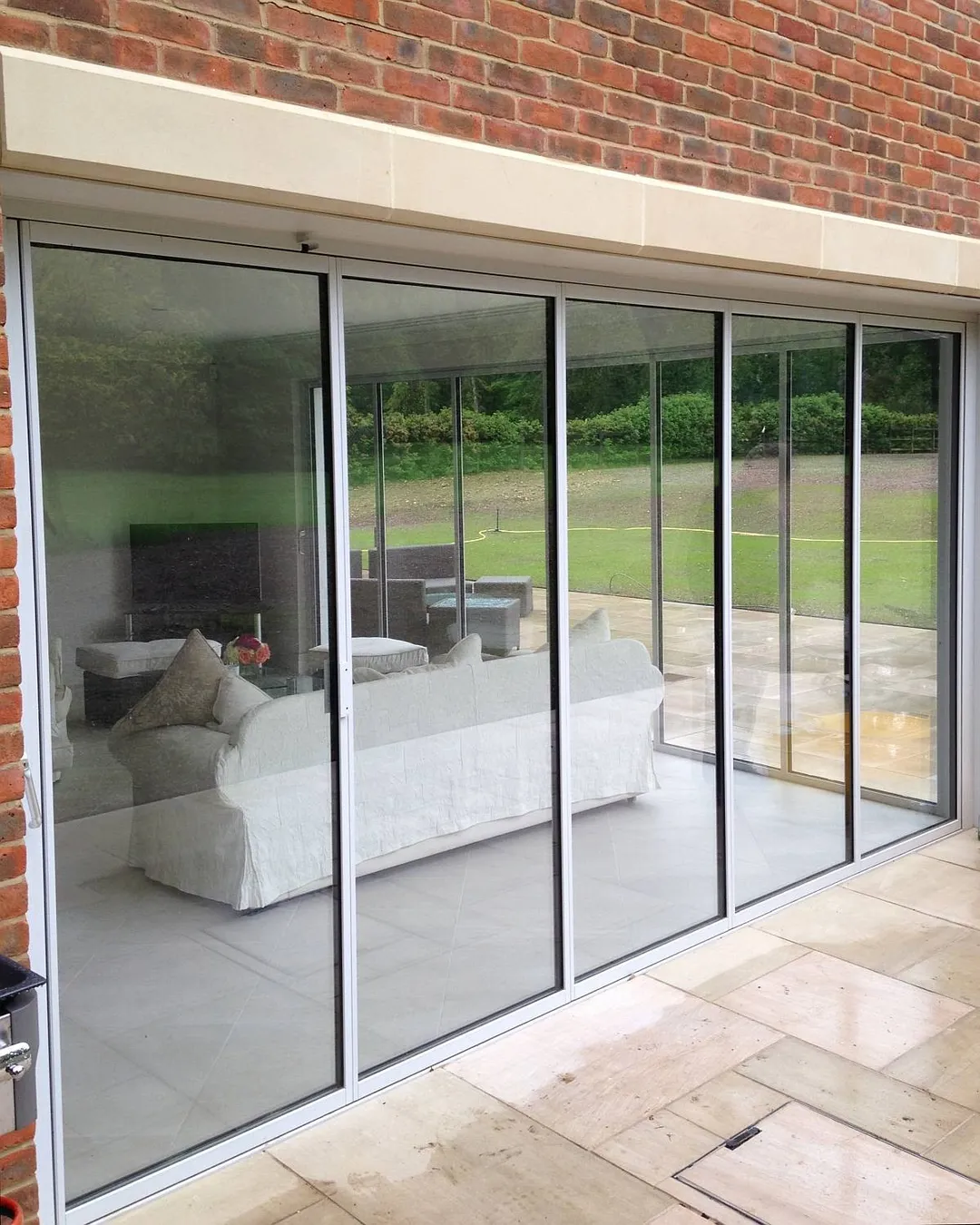
Size and Configuration
Opening sizes shape door design possibilities. Wide openings need thicker glass and stronger frames to handle wind loads. Double glazed glass doors spanning more than three metres often require extra support to prevent deflection.
Breaking large openings into multiple panels distributes the structural load. Folding door systems split the weight across several sets of rollers or hinges. This spreading of forces lets manufacturers build bigger doors while maintaining smooth operation.
Glass panel proportions influence stability and safety. Panels too wide for their height risk twisting under their own weight. The relationship between width and glass thickness follows engineering principles that ensure safe operation in all weather conditions.
Quality Indicators
Manufacturing precision shows in the details of double glazed doors with glass panels. Clean, consistent silicon seals indicate careful assembly. Smooth panel movement suggests proper alignment of all components.
Edge seals around glass units reveal build quality. Black spacer bars look neater than metallic ones and often perform better. The seal depth should match the manufacturer’s specifications exactly – variations point to poor quality control.
Component Standards
Quality hardware lasts longer than basic fittings. Stainless steel hinges resist corrosion better than plated steel. Running gear should use sealed bearings rather than plain bushes for smoother operation.
Glass Selection
Glass type choices depend on specific site requirements. Laminated glass provides extra security without needing bars or grilles. Toughened glass suits areas where human impact might occur, like busy doorways.
Solar control coatings cut heat gain while maintaining light levels. South-facing double glazed glass doors might need these coatings to prevent overheating. The coating position within the glass unit changes its properties – placing it on surface two or three produces different results.
Some door designs allow glass replacement without removing the entire panel. This feature saves money if accidental damage occurs. The best systems use dry glazing methods that make glass replacement straightforward.
Installation Standards
Proper installation preserves door performance. Wall fixings must match the door weight and expected usage. Inadequate fixings lead to movement that stresses glass units and breaks seals.
Installers should check opening squareness before fitting begins. Packing pieces level the frame precisely, preventing stress on glass units. Professional installation teams measure frame deflection under load to verify proper support.
Final adjustments fine-tune door operation. Correct setting of hinges or sliding mechanisms ensures panels meet their seals properly. These adjustments need checking periodically as buildings settle and materials age.
About SunSeeker Doors
With over 20 years of experience, SunSeeker Doors remains at the forefront of door design with our quality-tested patio doors and related products, including the bespoke UltraSlim aluminium slide and pivot door system, Frameless Glass Doors, and Slimline Sliding Glass Doors. All of our doors are suitable for both internal and external use.
To request a free quotation, please use our online form. You may also contact 01582 492730, or email info@sunseekerdoors.co.uk if you have any questions.


